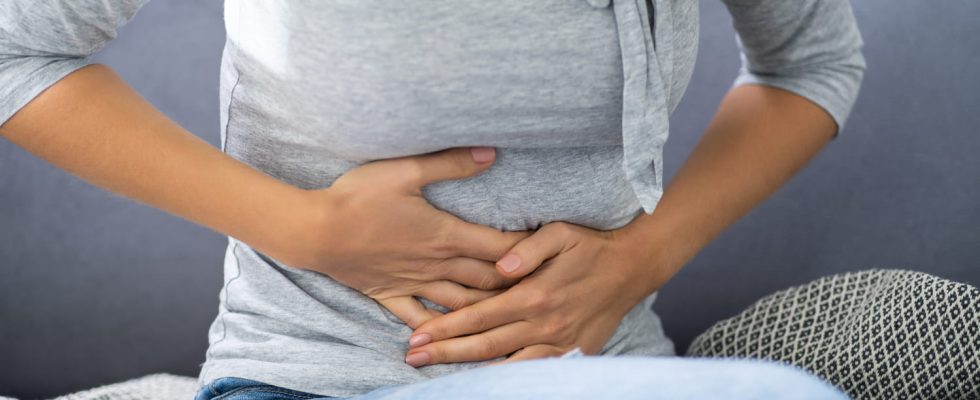If in the majority of cases, pain in the upper abdomen is benign, it can also correspond to much more serious illnesses. In this case, it is necessary to consult and adopt the appropriate treatments.
Abdominal pain is common in the population. Depending on the location, the pain can be caused by different underlying pathologies or risk factors. Pain in the upper abdomen can manifest in the upper left or upper right. What are the symptoms ? when to worry pain in the upper abdomen? What treatments to relieve them?
We can define the upper belly around 3 zones:
► At the top and to the left under the edge of the ribs, it is the “right hypochondrium”: there is the liver and the bile ducts (including the gallbladder), but also the duodenum, the head of the pancreas, the right angle of the colon, the right kidney and the base of the right lung.
► Top right under the edge of the ribsit is “the left hypochondrium”: there is the tail of the pancreas, the stomach, the spleen, but also the left kidney and the base of the right lung.
► Between the two and under the point of the sternum, it is “the epigastrium”: there is the stomach with the esophagus, the body of the pancreas and the attachment of the omentum, but also the bile ducts. The heart and its pericardium are very close.
What are the symptoms of upper abdominal pain?
► Biliary pain (or hepatic colic) is located in the epigastrium or the right hypochondrium. It is strong, twisting or cramping, with radiation in the right shoulder or scapula, or even between the two scapulae. “There are usually no triggers but it is aggravated by inspiration and coughing and there is no position that calms the pain”, explains Dr. Chiche, visceral and digestive surgeon. Vomiting may be associated with it.
► Gastroduodenal pain usually sits in the epigastrium and involves cramping, burning or twisting. “There may be an ascending irradiation in case of esophagitis during gastroesophageal reflux with perception of an acid taste in the mouth”, continues the specialist.
► A pain of gastroenteritis is of the type of diffuse cramps throughout the abdomen and without irradiation. It is accompanied by vomiting and diarrhea.
What are the causes of pain in the upper abdomen?
Depending on the location, it is possible to evoke certain pathologies.
► Epigastrium: acute pancreatitis, peptic ulcer disease, gastroesophageal reflux disease, gastritis, cholelithiasis, acute cholecystitis, cholangitis, torsion of the omentum. “You have to be wary of pain in this area because it can be linked to heart problems (angina pectoris or myocardial infarction)”, alert the doctor.
► Right hypochondrium: cholelithiasis, acute cholecystitis, cholangitis, peptic ulcer disease, pancreatitis, hepatitis, renal colic, pyelonephritis, right pleurisy, pneumopathy from the base of the right lung.
► Left hypochondrium: acute pancreatitis, renal colic, peptic ulcer disease, spleen problem, acute pyelonephritis, left pleurisy, pneumonitis from the base of the left lung.
When should you worry about upper stomach pain?
If the stomach pains last more than a few days and if they are violentit is advisable to consult a doctor.
What are the examinations in case of pain in the upper abdomen?
The main examinations, apart from a blood test which will assess the impact of the pain, are ultrasound, abdominal scanner and eventually MRI.
The doctor will suggest a treatment depending on the cause of the stomach ache. This can be:
- of the antispasmodics ;
- of the bandages digestive;
- of the anti-inflammatories;
- of the painkillers ;
- of the antibiotics.
To try to prevent stomach aches and in particular those due to a digestive disorder, it is advisable to have a balanced diet, eating slowly (chewing for a long time), calm.
Sheet produced in collaboration with Dr Renaud Chiche, visceral and digestive surgeon at the Clinique Geoffroy Saint-Hilaire (Paris 5th).
